Students Learn Design Thinking in Unique Research Project
Building an AI tool to improve medical interviews is the continuing focus of a Vertically Integrated Project offered by Health Sciences Design.
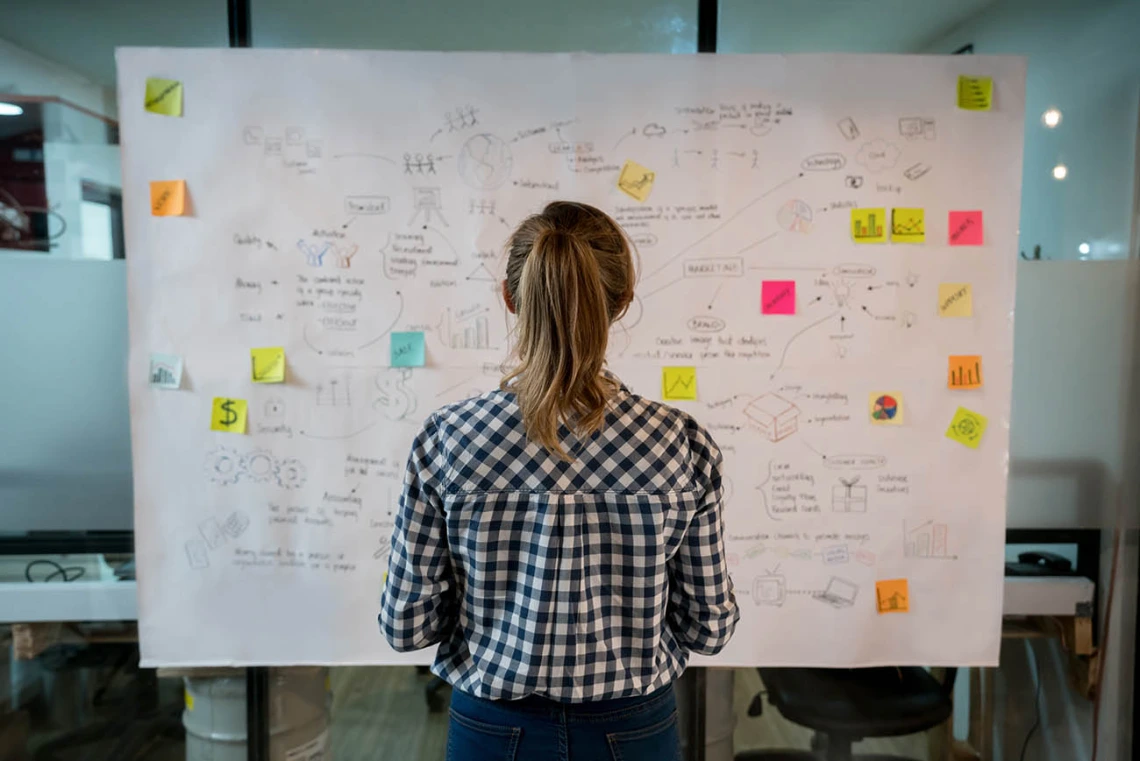
Students from different disciplines are encouraged to participate in Vertically Integrated Projects for multiple semesters, during which they learn how to apply design thinking to solve health care challenges.
It was the beginning of fall semester 2020, and Sydney Phan was logging into a new course at the University of Arizona Health Sciences. The goal of the course was to find ways of using artificial intelligence to improve patient-provider interactions. Once students received that directive, the rest was up to them.
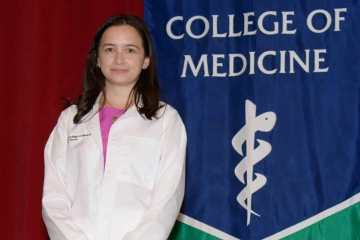
Sydney Phan graduated with honors with a Bachelor of Science degree in Psychological Science. She is now in her first year of medical school in the College of Medicine-Tucson.
Phan soon learned the course, offered by the University of Arizona Health Sciences’ Health Sciences Design program in collaboration with the Arizona Simulation and Technology Education Center, was unlike any class or research project she had ever done. Phan and the rest of the team would need to use Design Thinking to get their ideas off the ground and through the design and development process.
She was a junior at that time and enjoyed the experience so much she reenrolled, semester after semester, until she finished her undergraduate degree and entered medical school at the UArizona College of Medicine-Tucson. That is a unique aspect of “AI for Medical Interviewing” – it is one of several Vertically Integrated Projects where students are encouraged to participate for multiple semesters.
The design thinking process
Design thinking is a creative approach to solving problems with an emphasis on keeping the end user top of mind. Design thinking teaches students to go beyond simple brainstorming sessions by focusing on seven concepts: notice, empathize, define, ideate, prototype, test and reflect.
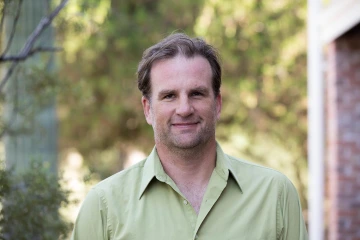
Winslow Burleson, PhD, is a social inventor, scholar, researcher, artist and educator with expertise in human computer interaction and the learning sciences. He and Kasi Kiehlbaugh, PhD, director of Health Sciences Design, established Vertically Integrated Projects courses at the University of Arizona Health Sciences.
Dr. Burleson, who is a member of the university’s BIO5 Institute, co-advises students in AI for Medical Interviewing with ASTEC executive director Allan J. Hamilton, MD, FACS, a Regents Professor of Neurosurgery in the College of Medicine-Tucson. They provide direction and support, but there are no step-by-step instructions.
“Pretty much the whole thing was design thinking,” Phan said. “We weren't just pulling from one major. It was literally just everything you've ever learned in your life; if it is remotely helpful, throw your idea out there.”
Building an AI chatbot
The team, made up of students from multiple disciplines, divided themselves into groups and set out to design and develop an artificially intelligent chatbot.
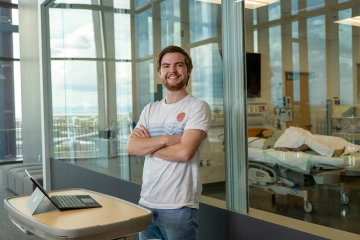
Kyle Mclemore is pursuing a bachelor’s degree with double majors in neuroscience and cognitive science and information science and technology.
“This application of AI seemed ripe from the start to evaluate how health care providers exhibit their empathetic understanding and emotional intelligence in their interactions with patients,” Dr. Hamilton said. “One group began to focus on what were the rules that underlie empathetic responses. A second group drilled down on what kinds of interactions are indicative of politeness. And, finally, a third team evaluated what words had positive or negative emotional valences.”
They hope it one day will be used to train medical students in bedside manner, a skill that is both crucial to the patient’s well-being and to the practice of medicine.
“If you have a trusted, beneficial interaction, where the doctor and patient each believe the other understands them, then that has all kinds of benefits,” Dr. Burleson said. “The inverse of that is if doctors are not polite, that has very high correlations to contested outcomes.”
"The students knew they were not working on something trivial. They knew they were working on something that might one day make a big difference in people’s lives,” Dr. Hamilton said.
As time went on, the team grew. Students identified their strengths and needs during each phase of development and recruited more help when needed.
“If they don't have enough coders, they interview and hire coders,” Dr. Burleson said of the ongoing course. “And if they need more medical expertise, they can do the same on the medical side.”
Design thinking is a creative approach to solving problems with an emphasis on keeping the end user top of mind.
Undergraduate and aspiring neuropsychologist Kyle McLemore enrolled for the spring 2022 semester. He is a member of the coding group that is programming the chatbot's ability to interact with humans.
“There is a lot of coding being done via Python with many tests conducted to ensure that the chatbot appears to be responding more like a human and less like a robot,” he said.
McLemore and the rest of the coding and design groups looked to Phan as a type of quality control. She was the only student in the group who planned to attend medical school.
“Everything they did had to be ‘Sydney tested’ – make sure that Sydney can understand what you're even talking about,” Phan said with a laugh. “I would test it a lot for all the iterations, because I knew how to give a medical interview to an extent.”
A new era of education
Today, the chatbot can answer up to 10,000 questions. It gives students the opportunity to rehearse medical interviews repeatedly while getting instant feedback from the machine, which grades the students on their level of politeness and responds in a like manner.
“The chatbot will respond to the user with a similarly scored politeness,” McLemore said. “For example, if the user talking to the chatbot was being rude, the chatbot would begin to reply in a rude format, too.”
Each phase of the project requires students to investigate different subjects, such as machine learning and cognitive architecture. The design thinking approach, McLemore says, may be the most powerful lesson.
“I have learned what it takes to approach a large project by completing more manageable, smaller goals,” McLemore said.
The chatbot appears to already be a beneficial training tool, based on the results of the “Sydney testing.” Phan’s medical interviewing skills are advanced for a first-year medical student.
“I've gotten a lot of good feedback that I'm very empathetic and very understanding and very kind in interviews,” Phan said. “I would say a big part of that is because of this opportunity with the AI.”
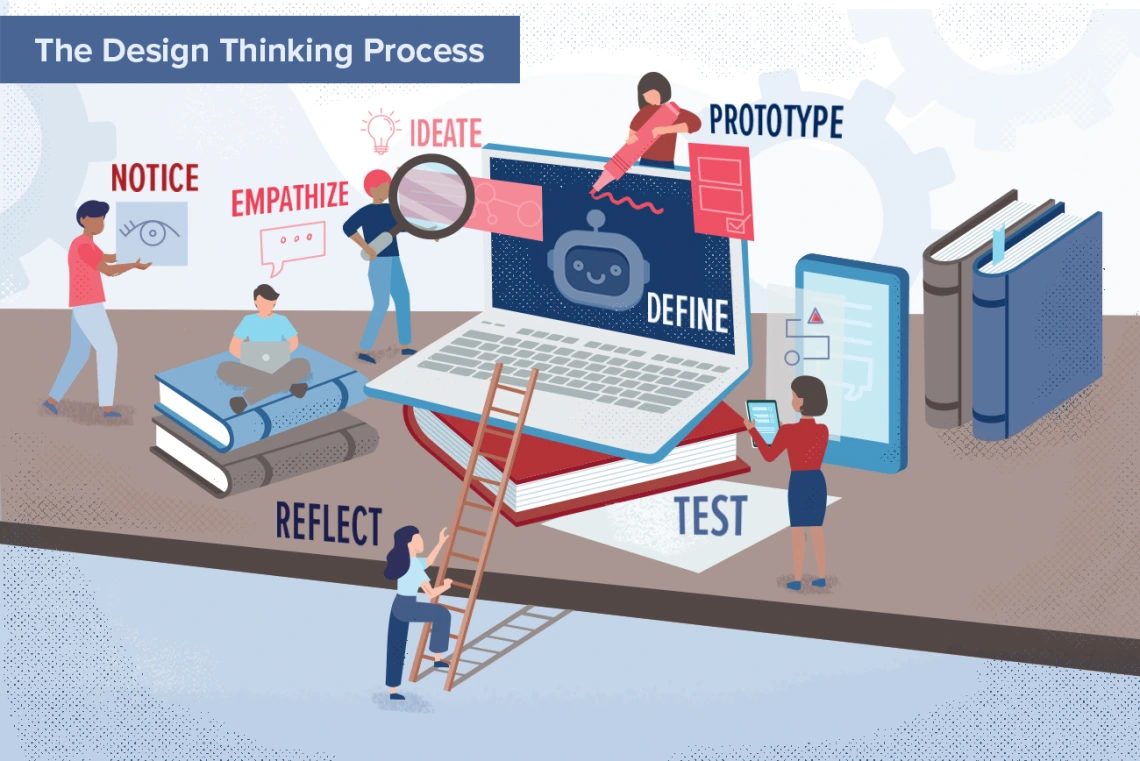
Our Experts
Contact
Brian Brennan
Health Sciences Office of Communications
702-604-3088
brianbrennan@arizona.edu

